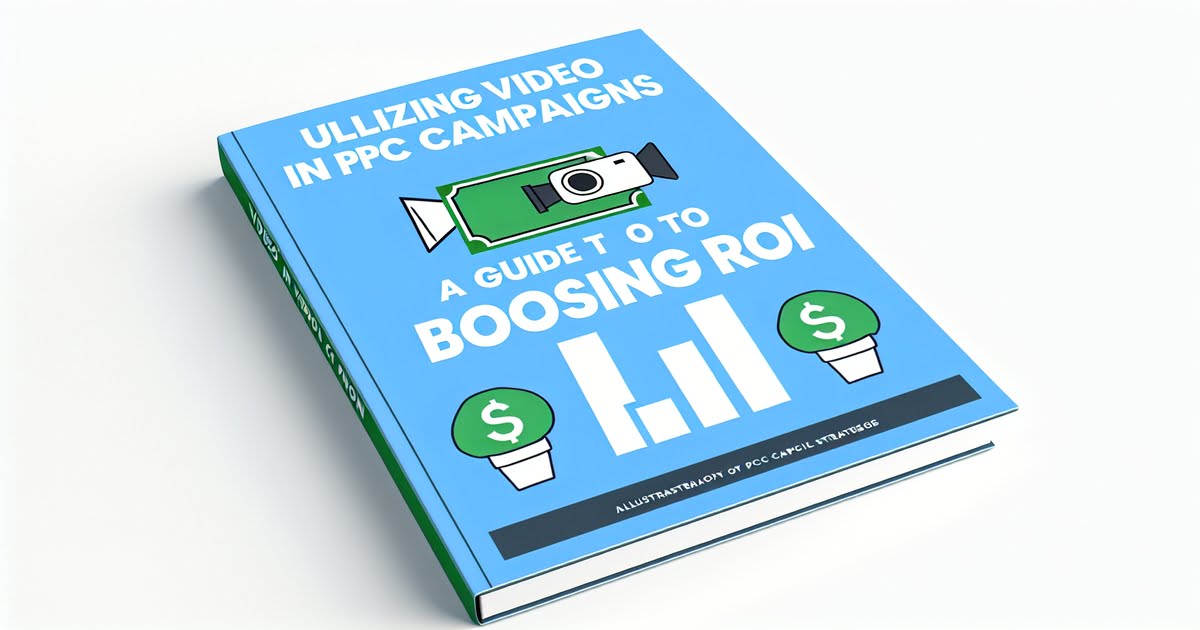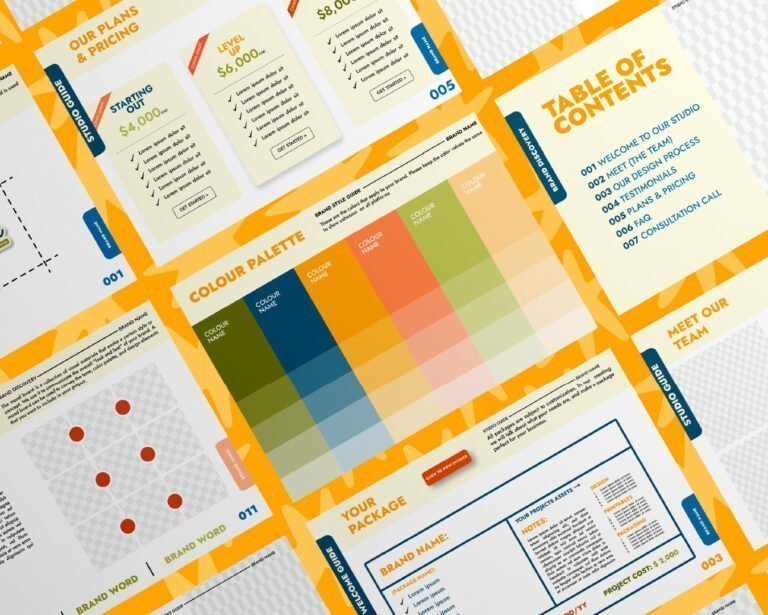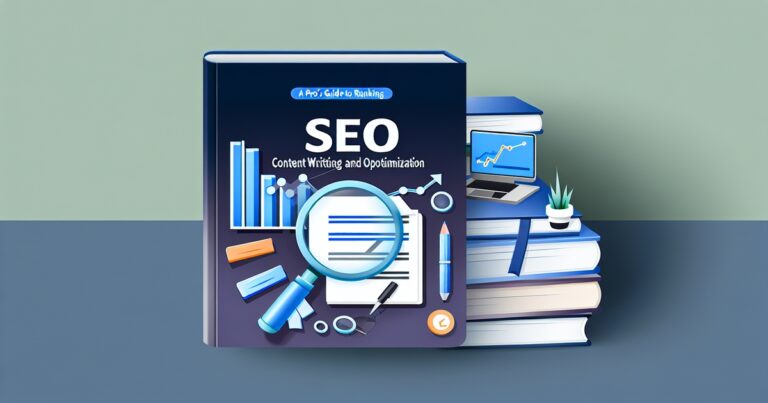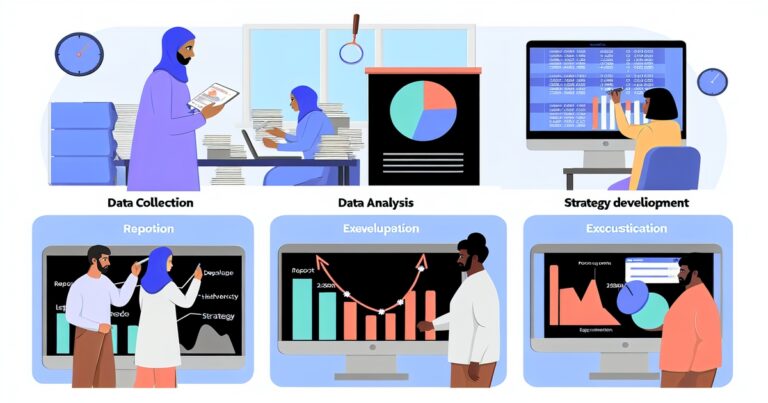In the digital age, where every click can pivot a business’s trajectory, leveraging video content in pay-per-click (PPC) campaigns has transformed from a luxury to a necessity. Gone are the days when static images and text ruled the online advertising realm; today, dynamic videos lead as the most engaging form of content. This shift in digital marketing and advertising isn’t just about keeping up with trends—it’s about harnessing the power of storytelling through visuals to connect with people on a deeper level as part of a comprehensive plan. By integrating video into PPC strategies, brands are not only capturing attention but also creating memorable experiences that drive action.
Key Takeaways
- Video ads are crucial for engaging audiences and driving conversions, making them an essential component of modern PPC campaigns.
- Investing in high-quality video production pays off by enhancing brand perception and viewer engagement, so prioritize clear messaging and professional presentation.
- Incorporating video on landing pages can significantly boost conversion rates by providing a more immersive and informative visitor experience.
- To maximize the impact of video in PPC, integrate it seamlessly into your overall marketing strategy, ensuring it complements other channels and messages.
- Optimize videos for PPC by using relevant keywords, compelling thumbnails, and clear calls-to-action to improve visibility and click-through rates.
- Leveraging platforms like Google Ads for video campaigns allows for precise targeting and measurement, enabling you to reach your ideal audience effectively.
- Adopting an omni-channel approach ensures your video content works harmoniously across all platforms, enhancing overall campaign performance.
- Stay ahead by keeping an eye on future trends in video marketing, such as interactive videos or advances in AR/VR, to continually innovate your PPC campaigns.
- Focus on strategies that maximize ROI from video ads by constantly testing and refining your approach based on performance data and audience feedback.
Importance of Video Ads
PPC Campaigns
Incorporating video ads into your PPC campaigns can significantly increase engagement. Videos capture people’s attention more effectively than static images or text found online. They tell a story that viewers connect with.
By using video content, you stand out in competitive PPC landscapes, helping people find your contribution online as part of your plan. It’s not just about being seen but being remembered. Videos leave a lasting impression on viewers.
Optimizing video ad placements across platforms is key. Each platform has its unique audience and best practices for video ads. Tailor your strategy to fit these nuances.
Enhanced Engagement
Videos have the power to keep people watching longer than traditional ads do. This increased time people spent on ads boosts brand recognition and recall.
Storytelling through video engages viewers emotionally and intellectually. It turns an ad into an experience rather than just another piece of marketing noise.
Interactive elements within videos further boost engagement levels. Polls, quizzes, and clickable links make people active participants in the narrative.
Driving Traffic
Video ads are excellent tools for directing people to your website or landing page. They serve as dynamic invitations that encourage clicks because they offer something more engaging on the other side.
Including call-to-action (CTA) buttons in videos can lead to immediate traffic boosts.
- “Learn More”
- “Visit Our Site”
- “Sign Up Today”
These CTAs guide users towards taking the next step seamlessly without disrupting their viewing experience.
Tailoring content to target specific demographics maximizes relevance and appeal.
- Age
- Interests
- Geographical location
This targeted approach ensures that your message reaches those most likely to be interested in what you’re offering.
Creating High-Quality Videos
Content Strategy
Integrating video into your overall content plan is crucial. It ensures that videos serve a purpose beyond just being visually appealing. They become a part of your brand’s story. For instance, using videos to explain complex products or services can break down barriers for potential customers. They get to understand what you’re offering in a more digestible format.
Creating a series of videos keeps the audience coming back for more. This ongoing engagement builds a relationship between the brand and its viewers. Each video in the series can cover different aspects of your product or service, providing value at every touchpoint.
Visual Appeal
Designing high-quality, visually appealing videos is non-negotiable. These videos represent your brand and should be crafted with care. Consistently using brand colors and logos across all videos strengthens brand recognition. Viewers start associating these visual elements with your company.
Animations are particularly effective in simplifying complex messages. They can make even the most complicated concepts fun and easy to grasp for anyone watching your video ads.
Message Clarity
Keeping video messages concise and clear is essential for viewer retention and understanding. Videos cluttered with too much information lose their impact quickly. Highlighting key points visually within the video aids in emphasizing what matters most about your message or offer.
Using captions enhances message comprehension significantly, especially since many people watch videos without sound on social media platforms.
Video Landing Pages Impact
User Experience
Utilizing video in PPC campaigns can significantly enhance the user experience on landing pages. Mobile-friendly videos ensure that users accessing your site from various devices have a seamless viewing experience. This is crucial since a large portion of internet traffic comes from mobile users.
Videos should load quickly to keep the audience’s attention. Slow-loading content often leads to frustration and high bounce rates. It’s vital to optimize video files for web use, ensuring they are not too heavy but still maintain quality.
Autoplaying videos might seem like a good idea to grab attention instantly, but it can backfire by annoying visitors or using up their data without consent. Giving users control over their experience respects their preferences and contributes positively to their perception of your brand.
Moreover, incorporating clear navigation cues within your video content aids viewers in understanding what action you want them to take next. Whether it’s visiting another page or signing up for a newsletter, these cues guide the user smoothly through the conversion funnel.
Conversion Rates
To truly understand how utilizing video in PPC campaigns affects business goals, tracking conversions directly attributed to these videos is essential. By analyzing this data, marketers can identify which aspects of their video content resonate with audiences and drive actions.
A/B testing different versions of videos allows you to refine elements such as messaging, length, and visuals for optimal performance. Through continuous testing and tweaking based on real-world feedback, businesses can improve their conversion rates over time.
Placing clear calls-to-action (CTAs) within or immediately after the video encourages viewers to take specific steps towards becoming customers or subscribers. These CTAs need to be visible and compelling enough to motivate immediate action while being relevant to the content presented in the video itself.
Incorporating Video into Strategy
Marketing Mix
Integrating video with other PPC elements boosts your campaign’s effectiveness. It creates a synergy that enhances overall performance. Balance is key here. Allocate funds wisely between video ads and other marketing channels. This ensures every dollar contributes to your goals.
Evaluating video’s role in the customer journey is crucial. Videos can attract, engage, or convert customers at different stages. For example, an explainer video might draw interest, while a testimonial could convince someone to buy.
Platform Choices
Google Ads
Leverage YouTube and the Google Display Network for your videos. These platforms offer vast audiences ready to engage with your content. Utilizing Google Ads’ targeting capabilities sharpens your focus on the right audience segments.
Monitor analytics within Google Ads for insights on how your videos perform. This data helps you tweak campaigns for better results over time.
- Bullet points:
- Use YouTube and Google Display Network.
- Target specific audience segments.
- Analyze performance data regularly.
Bing
Bing provides another avenue for video advertising worth exploring. Its audience network allows targeted campaigns similar to those on Google but often at different cost dynamics.
Comparing Bing’s CPV rates with others helps identify efficient spending avenues. Sometimes, Bing offers more attractive rates depending on the target market or industry sector.
- Key considerations:
- Explore Bing as an alternative platform.
- Leverage its audience network for targeting.
- Compare CPV rates across platforms.
Optimizing Video for PPC
Ad Performance
After incorporating video into your strategy, measuring its impact is crucial. View-through rate (VTR) tells us how many viewers watch our video ad completely or partially. A high VTR indicates strong interest in your content. It means people are paying attention.
Click-through rates (CTR) from videos to landing pages are also key. They measure how effective your video is at driving action. If CTRs are low, it might be time to tweak your message or creative approach.
Based on these metrics, adjusting targeting becomes necessary. Maybe certain demographics respond better than others. Use this data to refine who sees your ads.
Landing Page Optimization
Embedding related videos on landing pages can work wonders for dwell time. Visitors stay longer because they’re engaged with the content. This increased engagement signals to search engines that your page is valuable, potentially boosting rankings.
It’s important that the message on the landing page matches the preceding video ad content closely. Consistency keeps visitors from feeling lost and encourages them to take action like making a purchase or signing up for more information.
Testing different landing page designs with videos can reveal what works best for conversion rates:
- Try varying where you place the video on the page.
- Experiment with autoplay features versus click-to-play.
- Change up the call-to-action placement around each video segment.
These tests help identify optimal layouts and features that encourage visitor interaction and conversion.
By focusing on both ad performance and landing page optimization when utilizing video in PPC campaigns, businesses can significantly enhance their digital marketing efforts’ effectiveness and efficiency. This dual approach ensures not only that potential customers are drawn in by compelling ads but also kept engaged through well-designed landing pages tailored specifically towards encouraging further actions based upon initial interest sparked by those very same ads. Ultimately, understanding these dynamics allows marketers to craft strategies which leverage both areas seamlessly together as part of an overall cohesive plan aimed directly at maximizing return-on-investment within any given campaign framework thus proving once again just how powerful properly optimized use of multimedia elements such as these can truly be when deployed wisely within broader promotional contexts online today.
Utilizing Google Ads for Video
Campaign Setup
Before diving into the world of video PPC campaigns, setting clear objectives is crucial. Think about what you want to achieve. Is it more website visits, increased sales, or brand awareness? Each goal requires a different approach.
After defining your goals, choosing the right ad formats and placements becomes easier. Google Ads offers various options like in-stream ads that play before other videos or video discovery ads that appear in search results. Matching these options with your objectives maximizes impact.
Setting up tracking pixels is another key step. These small pieces of code on your website help track conversions from your video ads accurately. Without them, measuring success becomes guesswork.
Targeting Options
Targeting the right audience makes or breaks a campaign. With Google Ads, you can pinpoint viewers by demographics like age and gender or interests which align with your product or service.
Retargeting visitors who’ve already shown interest in your site can boost conversion rates significantly. Imagine someone visited your site but didn’t purchase anything; showing them a personalized video ad later might just nudge them towards making a buy.
Experimenting with lookalike audiences offers another avenue for expanding reach effectively. By targeting users similar to those who have interacted positively with past campaigns, you’re likely to find new customers ready to engage because they share characteristics with proven converters.
Omni-channel Approach
Cross-platform Strategy
To make the most of utilizing video in PPC campaigns, it’s crucial to develop a cross-platform strategy. This means your videos should appear not just on one platform but across many, like YouTube, Facebook, and Instagram. Each of these platforms has its own set of rules and user behaviors. For instance, videos on Facebook might perform better when they’re shorter and have captions for silent viewing.
You should adjust your creative assets accordingly. What works on YouTube might not work as well on Instagram Stories due to different viewer expectations and platform capabilities.
Moreover, tracking performance across platforms is key. It allows you to see where your videos are making the biggest impact. You can then allocate more budget to those platforms for better results.
Consistent Messaging
Maintaining a consistent brand voice across all video content is vital. Whether someone watches your video on YouTube or Instagram, they should be able to recognize your brand immediately. This involves aligning all video content with current marketing goals and campaigns.
Consistency goes beyond just the message; it includes visuals, tone, and calls-to-action (CTAs). If your current campaign focuses on promoting eco-friendly products, ensure this theme is evident in all videos regardless of the platform they’re hosted on.
This consistency helps reinforce your brand image in viewers’ minds leading to higher recall rates and potentially increasing customer loyalty over time.
Strategies for Success
Budgeting
Allocating your budget wisely is key to success in utilizing video in PPC campaigns. Start by analyzing which platforms give you the best audience reach and engagement rates with videos. This might vary depending on your industry and target demographic. For instance, if your audience spends a lot of time on YouTube, it makes sense to allocate more funds there.
After setting an initial budget based on platform performance, keep a close eye on how each campaign performs. If one platform outperforms another significantly, don’t hesitate to adjust your spending accordingly. This dynamic approach ensures that every dollar contributes towards reaching your marketing goals effectively.
Analytics and Insights
Understanding the impact of your video content comes down to diving deep into analytics and insights. Pay special attention to metrics like watch time, completion rate, and interaction rate. These indicators help gauge not only how engaging your content is but also its ability to hold viewers’ interest throughout.
Use these insights as a foundation for refining future strategies for utilizing video in PPC campaigns. For example, if you notice that shorter videos have higher completion rates, consider creating more concise content next time around. Comparing these metrics against industry standards gives you a clearer picture of where you stand among competitors—and what it takes to get ahead.
Incorporating lessons from past campaigns plays into crafting a successful strategy moving forward. Remember that each piece of data offers clues about viewer preferences and behaviors—information crucial for tailoring content that resonates better with your target audience.
By integrating these strategic elements—careful budget allocation based on platform performance and insightful analysis of campaign analytics—you lay down a solid foundation for success in using video within PPC campaigns. Reflecting back on the omni-channel approach mentioned earlier adds another layer; understanding how video fits into broader marketing efforts can amplify results across channels. This holistic view enables marketers not just to excel in isolated areas but thrive through integrated strategies that leverage strengths across mediums.
Future Trends in Video Marketing
Technological Advances
The landscape of video marketing is rapidly evolving. Technological advances are at the forefront, pushing boundaries and setting new standards. Staying updated on these changes is crucial for success.
New ad technologies, such as virtual reality (VR) and augmented reality (AR), are transforming how viewers interact with videos. These formats offer immersive experiences that were once thought impossible. For instance, a VR ad can transport users to different places or let them experience a product firsthand.
Experimenting with 360-degree videos is another way to captivate your audience. This format allows viewers to control their perspective, offering a unique and engaging experience. It’s perfect for showcasing locations or products from all angles.
Machine learning algorithms play a vital role in enhancing targeting precision. They analyze vast amounts of data to identify patterns and preferences among your target audience. By leveraging machine learning, you can ensure your ads reach the most interested viewers.
Consumer Preferences
Understanding consumer preferences is key to connecting with your audience effectively. Different types of videos resonate with different groups of people.
Some prefer short and snappy tutorials that solve their problems quickly. Others enjoy testimonials that provide real-life insights into using a product or service. Tailoring content length according to platform norms and audience attention spans ensures higher engagement rates. For example, Instagram Stories might require shorter clips than YouTube videos due to differing user expectations.
Adapting strategies based on feedback and engagement patterns observed is essential for continuous improvement. Analyzing comments, shares, likes, and viewing durations provides valuable insights into what works best for your audience. This feedback loop helps refine future campaigns for better performance.
Maximizing ROI with Video Ads
Cost Management
Monitoring CPV (cost per view) is crucial for budget efficiency in video PPC campaigns. Keep an eye on these costs to ensure you’re not overspending. By doing so, you can make adjustments as needed to stay within your budget.
Negotiating better rates is another strategy that can lead to significant savings. If you commit to larger spends or agree to longer terms, many platforms are willing to offer more favorable rates. This approach requires some negotiation skills but can be very beneficial.
Utilize automated bidding strategies for dynamic cost management. These systems adjust bids based on real-time data, aiming to get the best possible results within your budget constraints. They save time and often improve campaign performance by making quick adjustments that humans might miss.
Performance Analysis
Regularly reviewing campaign KPIs against objectives set at the outset is essential for understanding how well your video ads perform. This involves looking at metrics like views, engagement rates, and conversions relative to what you hoped to achieve when launching the campaign.
Conducting cohort analysis helps understand the long-term value driven by initial views or interactions with your ads. It segments users based on their behavior following interaction with your ad, providing insights into how different groups contribute to overall campaign goals over time.
Identifying trends over time within campaign performances allows strategic adjustments that align with evolving market conditions and audience preferences. As trends emerge from analyzing past performance data, they guide future decisions about content style, targeting options, and spending allocations.
Summary
Diving into the world of PPC with video isn’t just another strategy; it’s your golden ticket to standing out in a crowded digital landscape. We’ve walked through the nuts and bolts—from crafting compelling video ads and optimizing them for PPC, to leveraging Google Ads and embracing an omni-channel approach. The future of marketing is vividly visual, and with these insights, you’re better equipped to grab your audience’s attention, hook them with high-quality videos, and ultimately, boost your ROI. Remember, it’s not just about throwing videos into the mix; it’s about creating content that resonates, engages, and converts. Your brand has a story—use video to tell it in a way that’s impossible to ignore.
Ready to take your PPC campaigns to the next level? Start integrating video today. It’s time to turn those views into value and those clicks into customers. Let’s make your brand unforgettable—one video at a time.
Frequently Asked Questions
How important are video ads in PPC campaigns?
Video ads are crucial! They grab attention faster than text or images, making your message stand out. Think of them as the spotlight on a dark stage.
What’s key to creating high-quality videos for PPC?
Focus on clear messaging and professional visuals. It’s like cooking a gourmet meal – quality ingredients make all the difference.
Can video landing pages really impact my campaign?
Absolutely! Video landing pages can boost engagement and conversions. It’s like adding a turbocharger to your car; you’ll feel the difference.
How do I incorporate video into my PPC strategy effectively?
Start by aligning videos with your campaign goals, then use targeting tools to reach the right audience. It’s like matching puzzle pieces; when it fits, it works beautifully.
What tips can you offer for optimizing video for PPC?
Keep it short, sweet, and relevant. Use captions and eye-catching thumbnails too—it’s about making every second count.
How can Google Ads enhance my video marketing efforts?
Google Ads lets you place videos where your audience hangs out online, turning views into action. Think of it as fishing in a well-stocked pond.
Why should I consider an omni-channel approach with video ads?
Using multiple channels ensures your message is seen everywhere your audience is looking—like planting seeds in various fertile grounds for better harvests.









